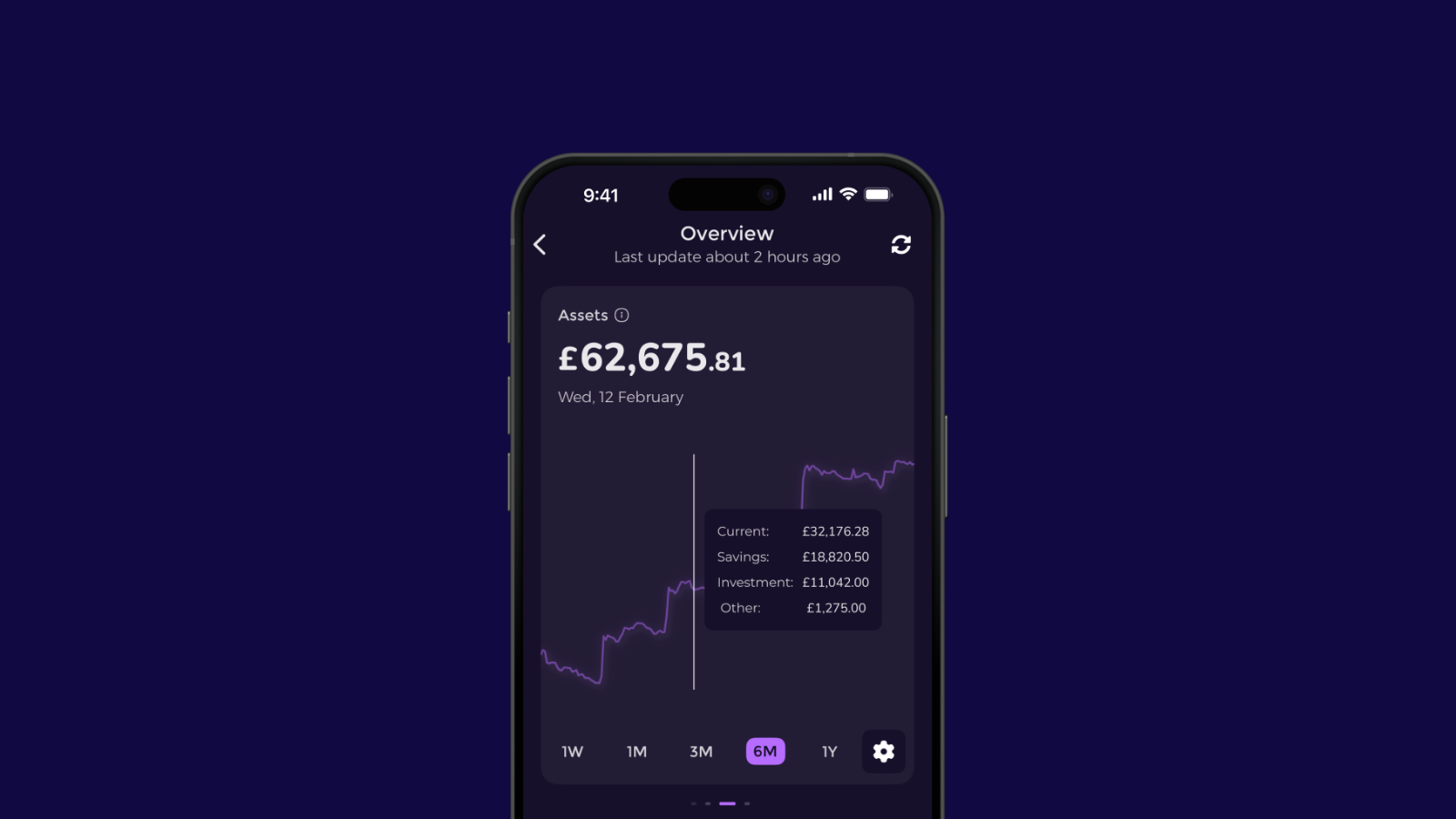Blog
Budgeting
The 3-Month Rule: Aim to Have at Least Three Months' Worth of Living Expenses in Your Emergency Fund
FEATURED ARTICLE
The 3-Month Rule: Aim to Have at Least Three Months' Worth of Living Expenses in Your Emergency Fund

Edoardo Moreni
July 26, 2023 •5 min read
TABLE OF CONTENTS
Why an Emergency Fund is Crucial
The 3-Month Rule: Aim for Three Months' Worth of Living Expenses
Step by Step Implementation
Life is full of surprises, and not all of them are pleasant. Emergencies can strike unexpectedly, leaving us feeling vulnerable and financially unprepared. An emergency fund serves as a safety net, providing a sense of security during uncertain times. The 3-Month Rule is a practical and effective approach to building financial resilience by aiming to have at least three months' worth of living expenses in your emergency fund.
Why an Emergency Fund is Crucial
An emergency fund is a stash of money set aside to cover unforeseen expenses or to tide you over during unexpected financial challenges. Whether it's a medical emergency, sudden job loss, or a major home repair, having a safety net can prevent you from falling into debt or facing financial ruin. An emergency fund offers peace of mind, knowing that you have a financial cushion to handle life's curveballs without derailing your long-term financial goals.
Without an emergency fund, you might be forced to rely on credit cards, personal loans, or borrow from friends and family during emergencies. This can lead to a vicious cycle of debt, making it challenging to regain financial stability.
An emergency fund provides a sense of control over your financial destiny, allowing you to face unexpected events with confidence and resilience.
The 3-Month Rule: Aim for Three Months' Worth of Living Expenses
The 3-Month Rule is a widely recommended guideline for determining the ideal amount for your emergency fund. The rule suggests saving enough money to cover essential living expenses for a minimum of three months. These living expenses typically include rent or mortgage payments, utility bills, groceries, transportation costs, and other crucial monthly obligations.
Why three months?
Having three months' worth of living expenses in your emergency fund provides a reasonable buffer in case of prolonged job loss, health issues, or other significant financial setbacks.
It allows you to navigate through temporary storms without having to make drastic lifestyle changes or compromising on your long-term financial plans.
Step by Step Implementation
- Assess Your Living Expenses
Begin by evaluating your monthly living expenses. Create a comprehensive list of all essential costs, such as housing, utilities, groceries, transportation, insurance, and any necessary loan payments. Be honest and accurate while calculating these expenses, as this forms the basis for your emergency fund target.
Use the previous three to six months' worth of expenses as a reference point. Look through your bank statements, credit card bills, and receipts to get a clear picture of your spending patterns. This exercise will also help identify areas where you can cut back on discretionary spending.
- Set a Realistic Goal
Based on your evaluation, set a realistic goal to save at least three months' worth of living expenses. If you are uncertain about the exact amount, consider seeking advice from a financial advisor. Your goal should be challenging yet attainable, ensuring that you won't be overwhelmed by the savings process.
Start by setting smaller milestones to celebrate along the way. For example, aim to save one month's worth of expenses within the first six months and build from there. This approach will provide a sense of accomplishment and motivation as you progress towards your ultimate goal.
- Start Saving Gradually
Building an emergency fund takes time and consistent effort. Begin saving gradually, allocating a portion of your income to the fund each month. Automate your savings by setting up a direct deposit into a separate savings account earmarked specifically for emergencies. Treat this contribution as non-negotiable, just like any other essential bill.
Consider using apps or online banking tools that facilitate automatic transfers to your emergency fund - Emma Pots provided by the Emma app can help you do this.
The "set it and forget it" approach ensures that you prioritise saving, regardless of competing financial demands.
- Minimize Unnecessary Spending
As you work towards your emergency fund goal, identify areas where you can cut back on non-essential spending. Analyse your budget and find opportunities to reduce discretionary expenses, such as dining out, entertainment, or impulse purchases. Redirect the money saved from these cutbacks into your emergency fund.
Challenge yourself to adopt frugal habits without sacrificing your overall well-being. For instance, explore cost-effective alternatives for leisure activities or dining, or consider DIY solutions for home improvements. Small changes can add up to significant savings over time.
- Utilise Windfalls and Bonuses
Take advantage of unexpected windfalls or bonuses, such as tax refunds, work bonuses, or monetary gifts. Instead of splurging on indulgences, allocate a portion or the entirety of these windfalls into your emergency fund. Doing so will accelerate your progress and provide an extra boost to your financial safety net.
Avoid considering these windfalls as free money to be spent frivolously. Instead, view them as valuable opportunities to reinforce your financial security and stay committed to your long-term goals.
- Stay Committed to Your Goal
Consistency and discipline are key to successfully building an emergency fund. Stay committed to your goal, even during times when saving may feel challenging or when temptations arise. Remind yourself of the peace of mind and financial security your emergency fund will provide in times of need.
Create a visual representation of your progress, such as a chart or graph, to track your savings journey. Seeing your emergency fund grow over time can be incredibly motivating and reinforce your determination to stay on track.
- Reevaluate and Adjust
Life circumstances change, and so should your emergency fund strategy. As you progress, reevaluate your living expenses and adjust your savings goal accordingly. If major life events occur, such as marriage, children, or a change in employment, consider increasing your emergency fund target to match your new financial responsibilities.
Regularly review your emergency fund to ensure it remains aligned with your current needs. A well-maintained emergency fund not only offers financial security but also the flexibility to adapt to unforeseen circumstances.
The 3-Month Rule is a powerful financial strategy that emphasizes the importance of having at least three months' worth of living expenses in your emergency fund. Building an emergency fund requires dedication, patience, and a commitment to your long-term financial well-being.
By following the step-by-step implementation guide, you can create a robust safety net that will shield you from the stress and burden of unexpected expenses. Stay disciplined in your savings efforts, and remember that every contribution, no matter how small, brings you closer to financial resilience.
As you achieve your three-month target, consider expanding your emergency fund further to ensure an even stronger foundation for your financial future. An emergency fund is not a static entity but a dynamic tool that evolves with your life circumstances.
As you embark on your journey to build an emergency fund, consider leveraging modern financial tools to make the process even more efficient. One such tool is "Emma Pots" by the Emma app. Emma Pots is a feature that allows you to save money for specific financial goals, including building an emergency fund. With Emma Pots, you can set up automated transfers from your checking account into designated savings pots, making it effortless to save consistently towards your emergency fund target.

The Emma app also provides valuable insights into your spending habits, allowing you to identify areas where you can save more effectively. By having a clear understanding of your finances and incorporating Emma Pots into your savings strategy, you can expedite the process of building your emergency fund and achieve your financial goals with greater confidence.
Remember, an emergency fund is not only about financial security but also about peace of mind. Life is unpredictable, and having a well-prepared safety net will empower you to face unexpected challenges with resilience and determination. Stay disciplined in your savings efforts, and make adjustments as needed to keep your emergency fund aligned with your evolving needs.
Your journey towards financial stability and preparedness begins with a single step – start building your emergency fund today. Embrace the 3-Month Rule, utilise tools like Emma Pots, and take control of your financial well-being. With dedication and foresight, you can create a brighter and more secure financial future for yourself and your loved ones.
You may also like
Check out these related blog posts for more tips
© 2025 Emma Technologies Ltd. All Rights Reserved.
Emma is registered and incorporated in England and Wales.
Emma Technologies Ltd is an appointed representative of RiskSave Technologies Ltd, which is authorised and regulated by the Financial Conduct Authority (FRN 775330).
Payment services (Non MIFID or Deposit related products) for Emma Technologies Ltd are provided by The Currency Cloud Limited. Registered in England No. 06323311. Registered Office: Stewardship Building 1st Floor, 12 Steward Street London E1 6FQ. The Currency Cloud Limited is authorised by the Financial Conduct Authority under the Electronic Money Regulations 2011 for the issuing of electronic money (FRN: 900199). For more detail on how your money is protected please see here. You can also find Currency Cloud's Terms of Use here.
Emma Technologies is an Introducer Appointed Representative of Quint Group Limited and not a lender. Quint Group Limited is authorised and regulated by the Financial Conduct Authority (Firm Reference Number 669450). Monevo Limited is an Appointed Representative of TransUnion International UK Limited. TransUnion is authorised and regulated by the Financial Conduct Authority (Firm Reference Number 737740). Emma Technologies introduces customers first to Quint Group Limited, as a licensed credit broker, who then refers on to Monevo Limited.
Emma is registered with the Financial Conduct Authority under the Payment Services Regulations 2017 for the provision of payment services.
Financial Conduct Authority Reg Nr: 794952.
Company Registration Number: 10578464.
Data Protection Registration Number: ZA241546.
All testimonials, reviews, opinions or case studies presented on our website may not be indicative of all customers. Results may vary and customers agree to proceed at their own risk.
Resources: Cancel subscriptions, Cashback offers, Who charged me, Rent Reporting, Budgeting, Investment universe, Emma vs Moneyhub.
Featured cashback offers: Samsung, SimplyCook, NordVPN, Audible, M&S Homeware.









